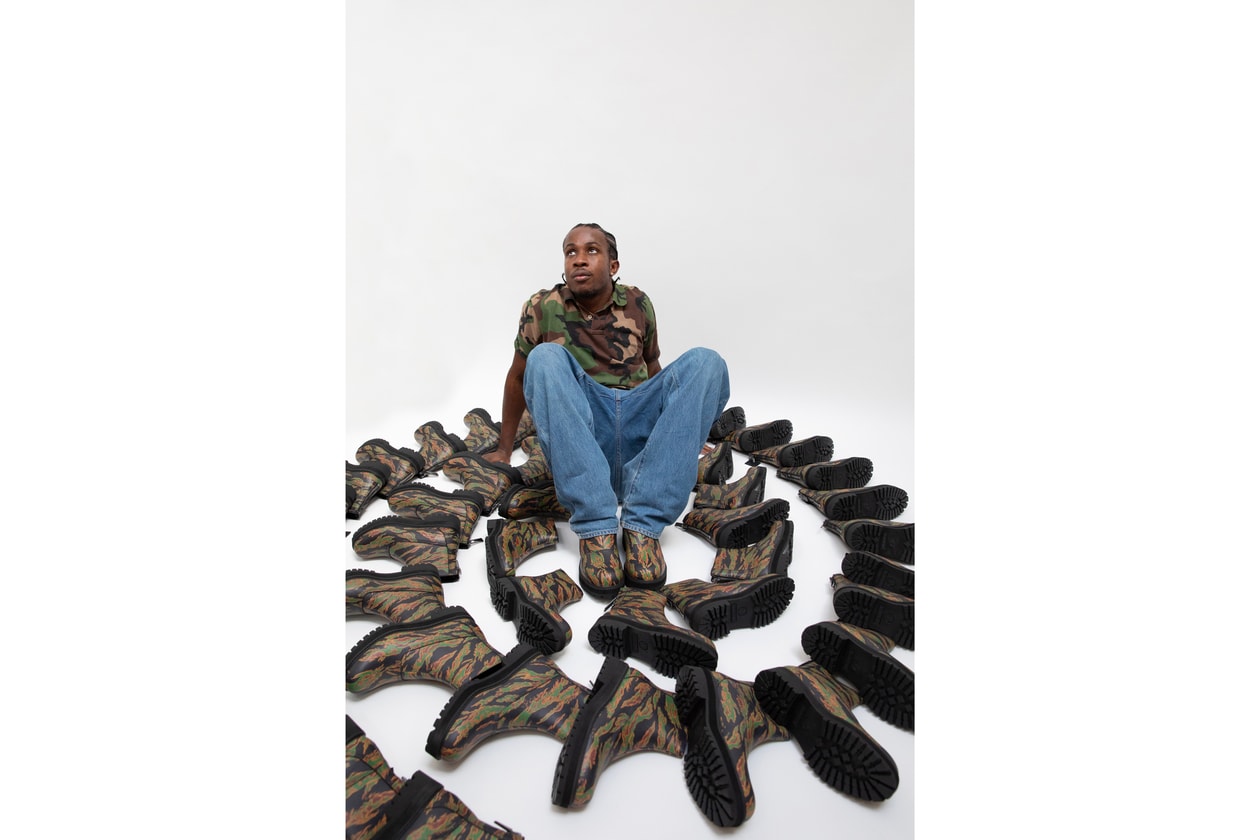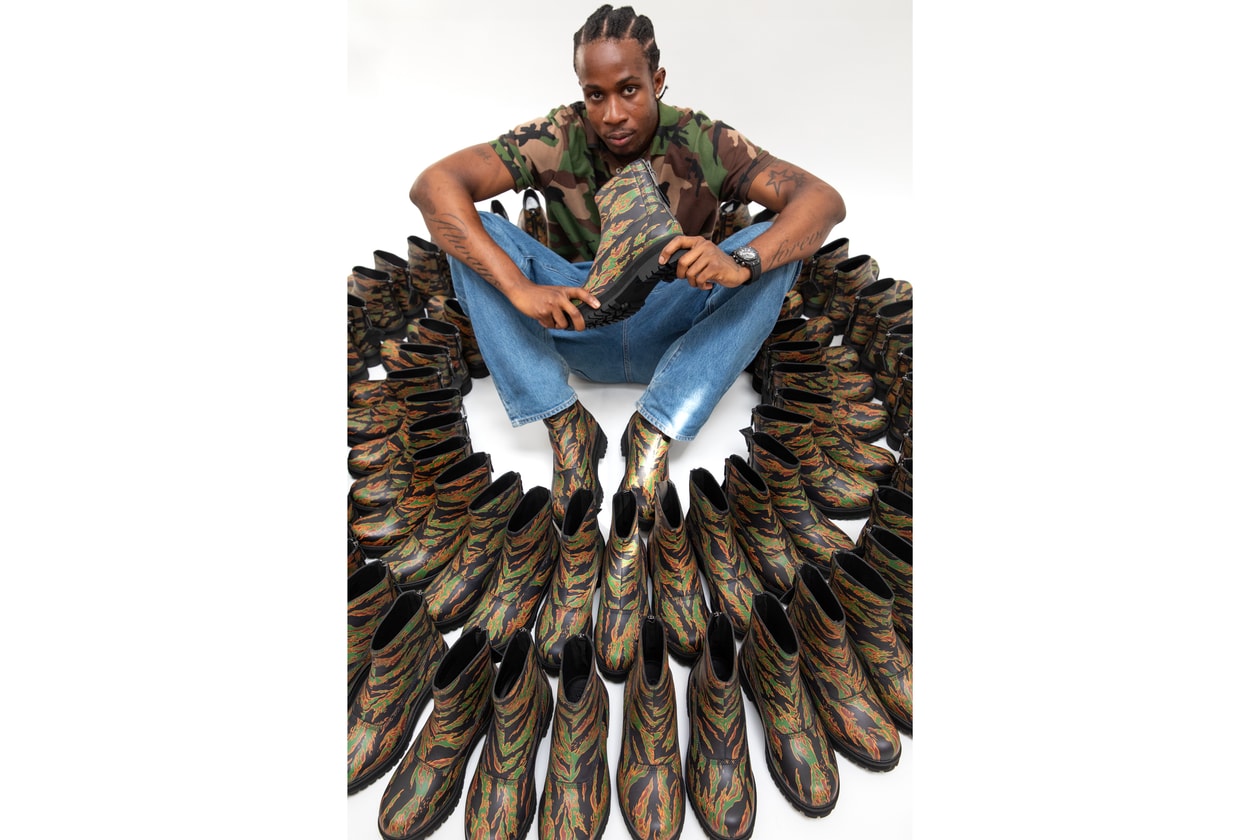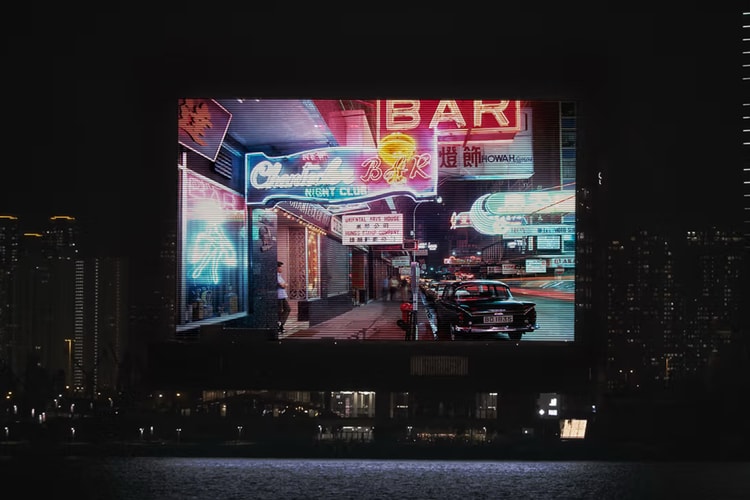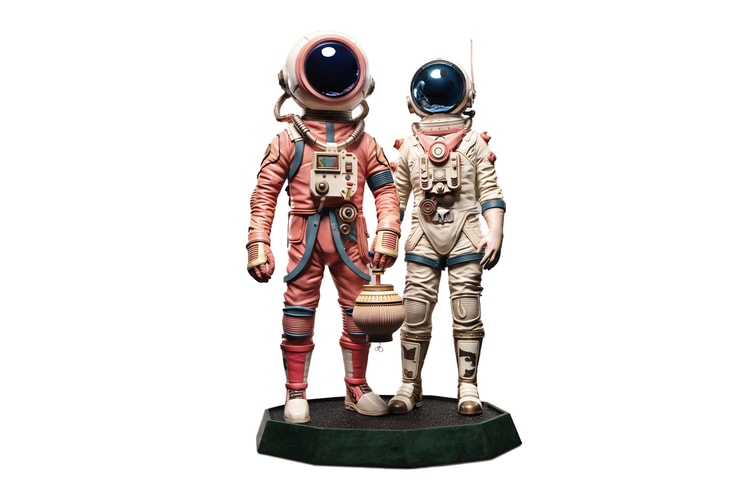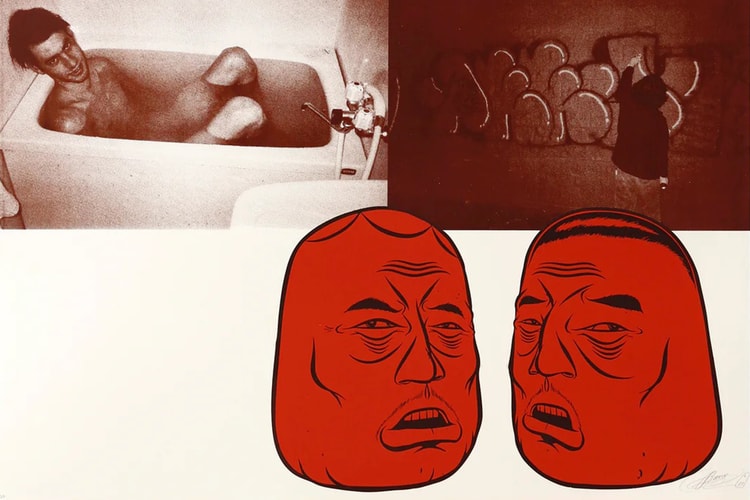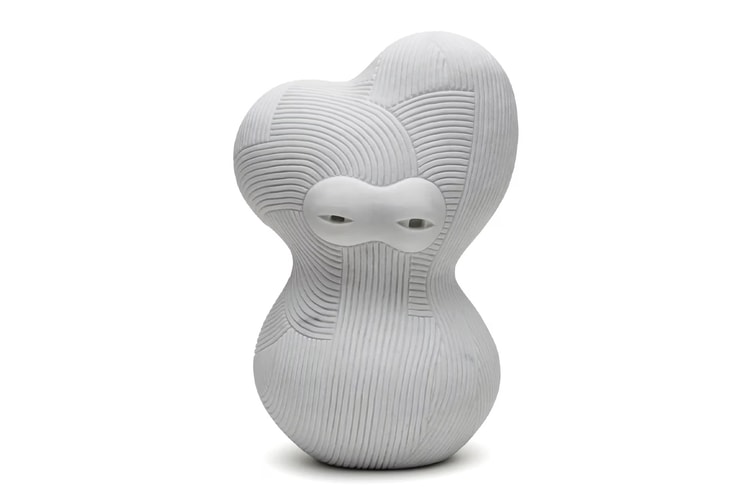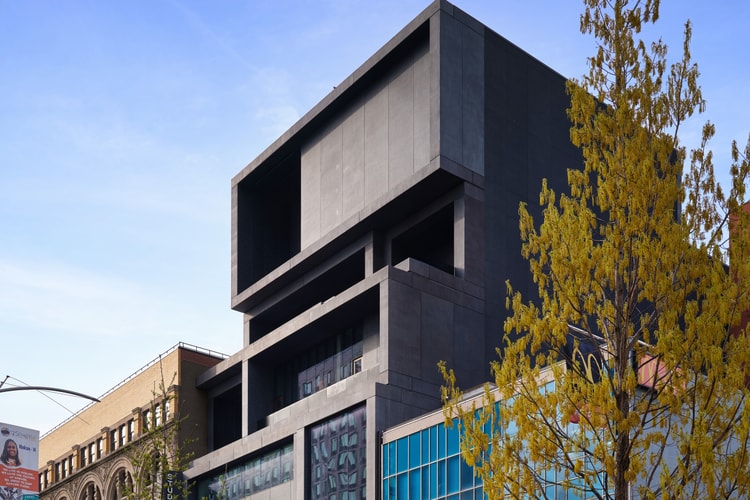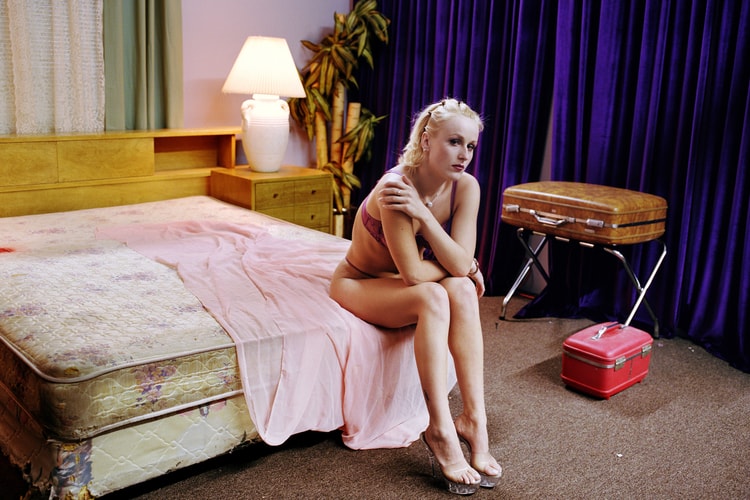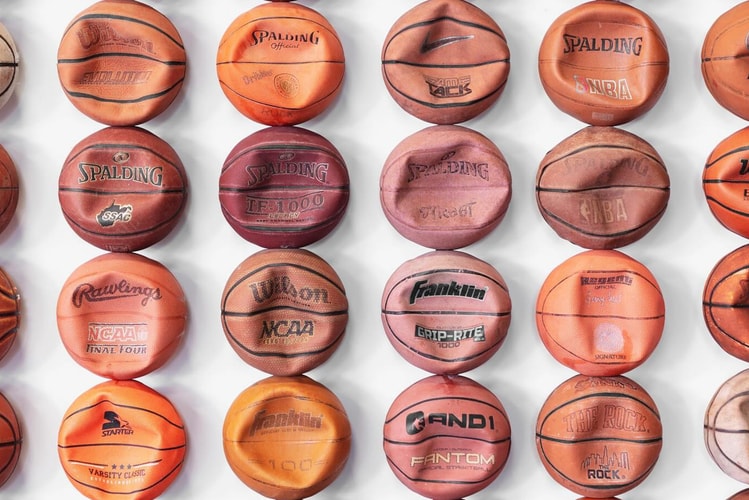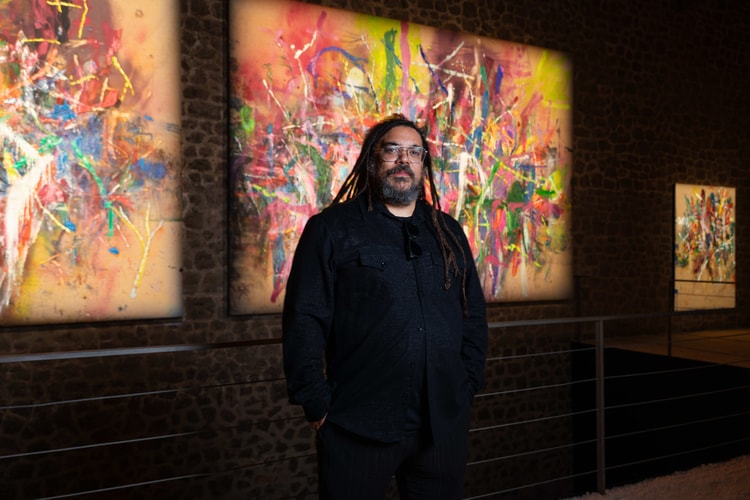SOLDIER Reworks Timberland's 6-Inch Zipper Boot
The London-based artist walks us through the inspirations and intentions behind The Tiger.



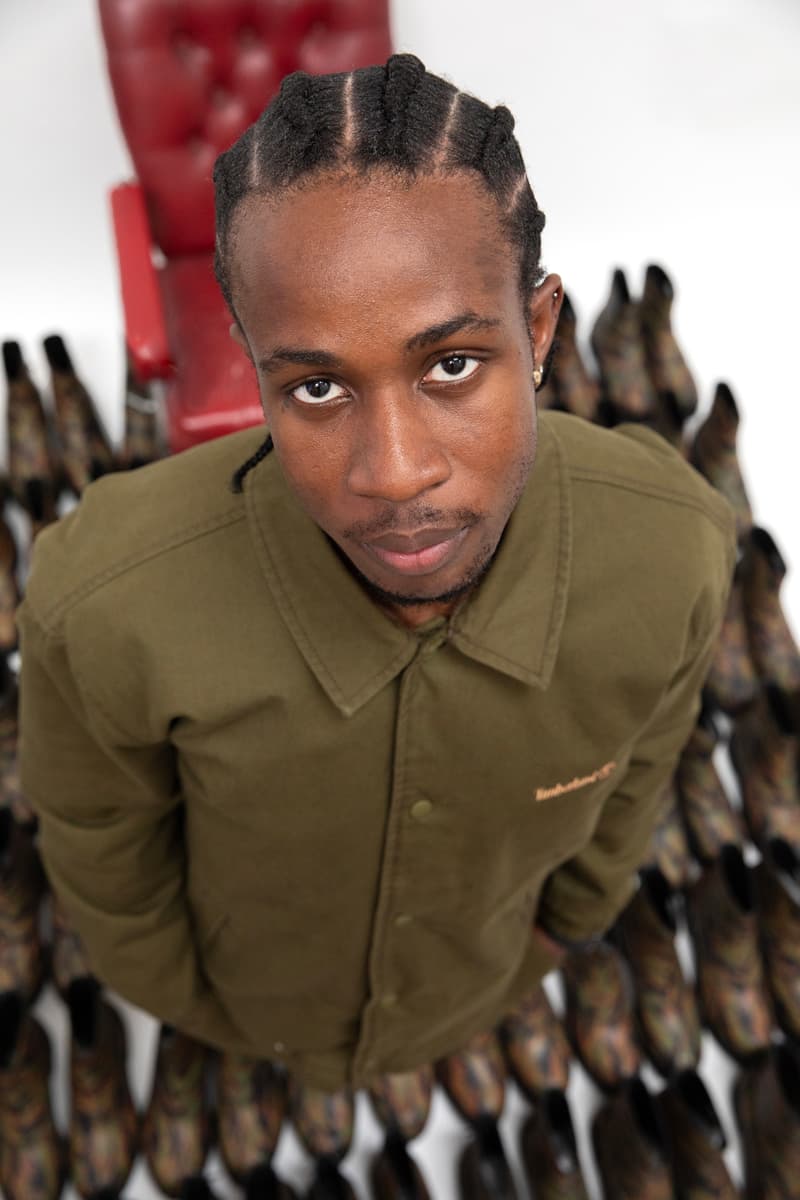
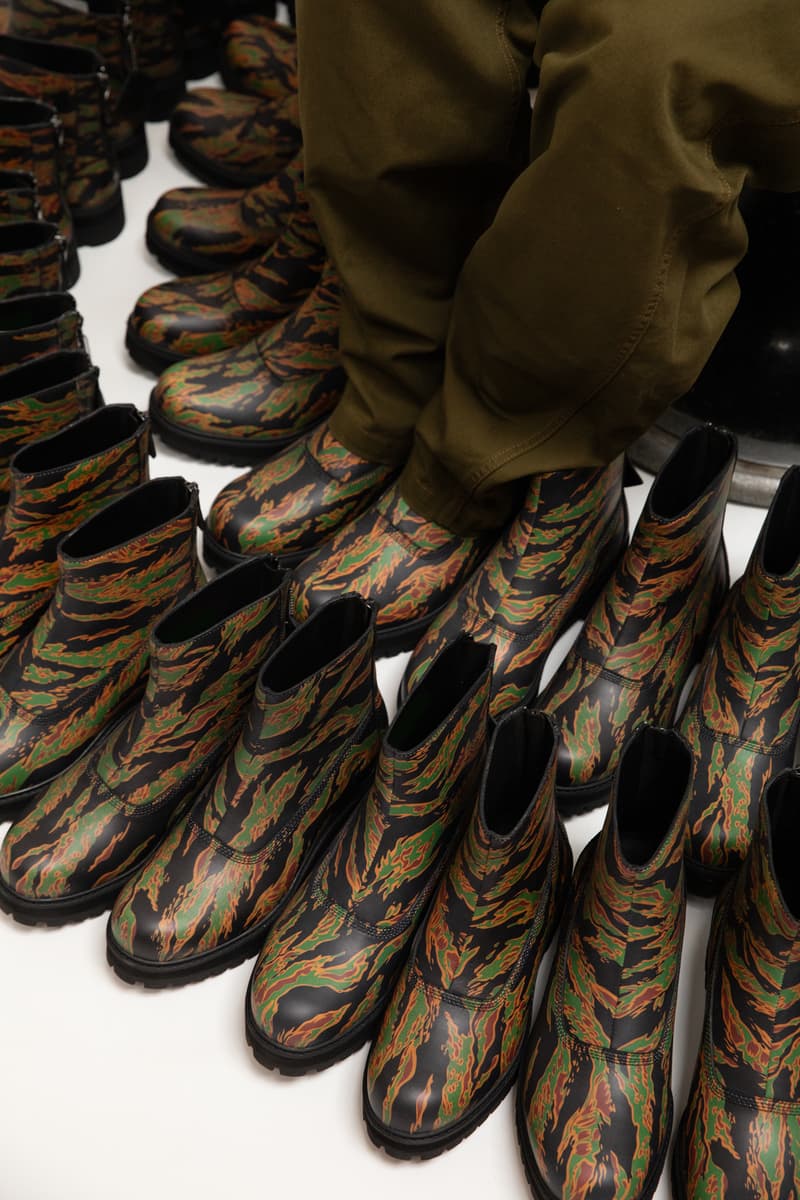
For SOLDIER, strength is less of a force than a porosity of being. It’s a tender pursuit of the world, guided by imagination, vulnerability and purpose. Over the last few years, the Lagos-born, London-based artist has carved a name for himself on the global stage using mixed-media works as a language for personal reflection and societal commentary, all with the hopes to bring like-minded creatives along for the ride. His practice is one rooted in transformation: of the self, of space and how we connect to the world around us.
Now, he reunites with Timberland for their second creative project, lending his artistic eye to the iconic 6-Inch Zipper Boot. Dubbed The Tiger, the design draws on SOLDIER’s signature use of camouflage as a countercultural symbol, with bold striped patterns that nod to lineages and streetwear and military heritage. The shoe also channels the beloved “beef and broccoli” colorway — long a fixture in NYC street style — grounding the piece in cultural history, while pushing the expectations of the model’s look and feel forward
Much like his reworked Yellow Boot, and practice at large, The Tiger stands as an ode to rebellion, self-expression and living life off the beaten path. On the occasion of the project, we caught up with SOLDIER to talk the poetics of camouflage, inspirations behind the boot and art’s power to reflect and reshape the world. Read below for the full interview.
/>[/slider]
‘What is a symbol that embodies my memories, who I am and what I want to represent?’ Camouflage came to mind… it meant reclaiming something that could be turned into something beautiful.
What’s it been coming together with Timberlands for The Tiger?
Last year’s lace-ups were so well received, so it feels great to get to continue this narrative between myself and Timberland. With this, I wanted to work towards something bigger, and it’s been amazing putting ideas down, getting apparel up and having people experience my work in a different form.
Can you walk us through the design and name some inspirations for the boots?
No pun intended — The Tiger’s are wild. When you think of Timberland, the lace-ups or hiking boots come to mind, but from the get go, we were given a silhouette that was really different. At first, it was a challenge for me — understanding how I wanted them to look and feel — though eventually, I was able to lean into it and create something unique and really rare.
“Beef and broccoli” is an OG colorway. I wasn’t raised in America, but especially the green and brown, it’s easy to see how New York’s influence of New York seeps. Growing up, I’d hear Tupac when I would get my haircut in salons in the middle of Lagos. I didn’t know anything about him — I could barely speak English at the time. So in a way, this shoe is a culmination of those influences.
What role does camouflage play in your practice as a whole?
A lot of my work explores camouflage as a metaphor. When I first started skateboarding, WAFFLESNCREAM and my collective Motherlan were the first of their kind in Lagos. I’d see the pattern on pants and decks, but quickly found out that civilians aren’t allowed to wear camouflage in Lagos. I got pulled over by the army.
Fast forward to getting a scholarship to come to London during COVID, I asked myself, ‘What is a symbol that embodies my memories, who I am and what I want to represent?’ Camouflage came to mind. A. because of my experiences, B. because I’m very anti-war, and C. because it meant reclaiming something man-made that, on its face, wasn’t great, but could be turned into something beautiful. Camouflage is centered in floral patterns; it’s rooted in function rather than war.
You draw on several places around the world, and the use of camouflage speaks to moving through those spaces with ease.
People are more than just the place they’re from. Sure, I was born and raised in Lagos, but the human experience is everything you gather from all around the world. Everyone in this world should have the ability to move around, travel and have all these amazing experiences because so many special things can come from them.
The boots are being launched in a way that feels similar to an art drop. How do you envision them out in the world?
I wanted them to be like a limited-edition print. We only made 50, so they’re going to be difficult to get, and like every other artwork in the world, we wanted to keep it rare.
When we were designing the shoe, we really wanted to stray away from the classic city look and create something that felt more off grid. The kind of shoe where you put them on and could be on a farm, in the world or just exploring. That’s the way I’ve been feeling recently: out in reality, out in the wild a bit more. My studio is next to a river, so I spend most of my time in nature. There’s a part of me that wants to go off the grid, that wants to get away from the stress of the city and social media and the shoe embodies that feeling.
There’s a part of me that wants to go off the grid, that wants to get away from the stress of the city and social media and the boot embodies that feeling.
Since your first time working with Timberland, how have you seen your practice evolve?
I was quite young – 23 at the time – and my practice was a bit more hands-on, it felt quite raw. Now, there’s a new level of refinement in my work and you can see that showcased in The Tiger. That’s my goal now: to keep the emotional intensity, while reaching for a new level of refinement.
Whether it be through art or fashion, what do you want people to take away from your work?
I’ve been making and looking at art my whole life, but as I got older, I realized that I didn’t feel represented by the artwork around me. For a while it felt distant, like a shiny toy you couldn’t play with. In music and fashion, you see so many people playing and immersing themselves in those worlds, but in art that was more rare.
I just want to put all my experiences out there. I want to make work for a younger version of myself person, like me, who could see my work as a safe haven. It’s a way for me to understand and make sense of the world I live in and express it. It can be used politically, it can be used to make a stand, it can be used to change people’s minds – that’s what my practice means to me.
I believe in beauty. I do think the world needs to be a bit more beautiful because we spend so much of our time in a world of ugly systems and I feel like it takes the edge off – when you can come back home and see a nice painting or lilacs next to woods. I like the aesthetics of everything.
Have any advice for young artists?
People won’t always give you the ability to say something, so you need to find your own way to say it. I decided to become an artist knowing the pains that come from it, but if you can find something you love and hold onto it no matter what, no one can take it away from you.





